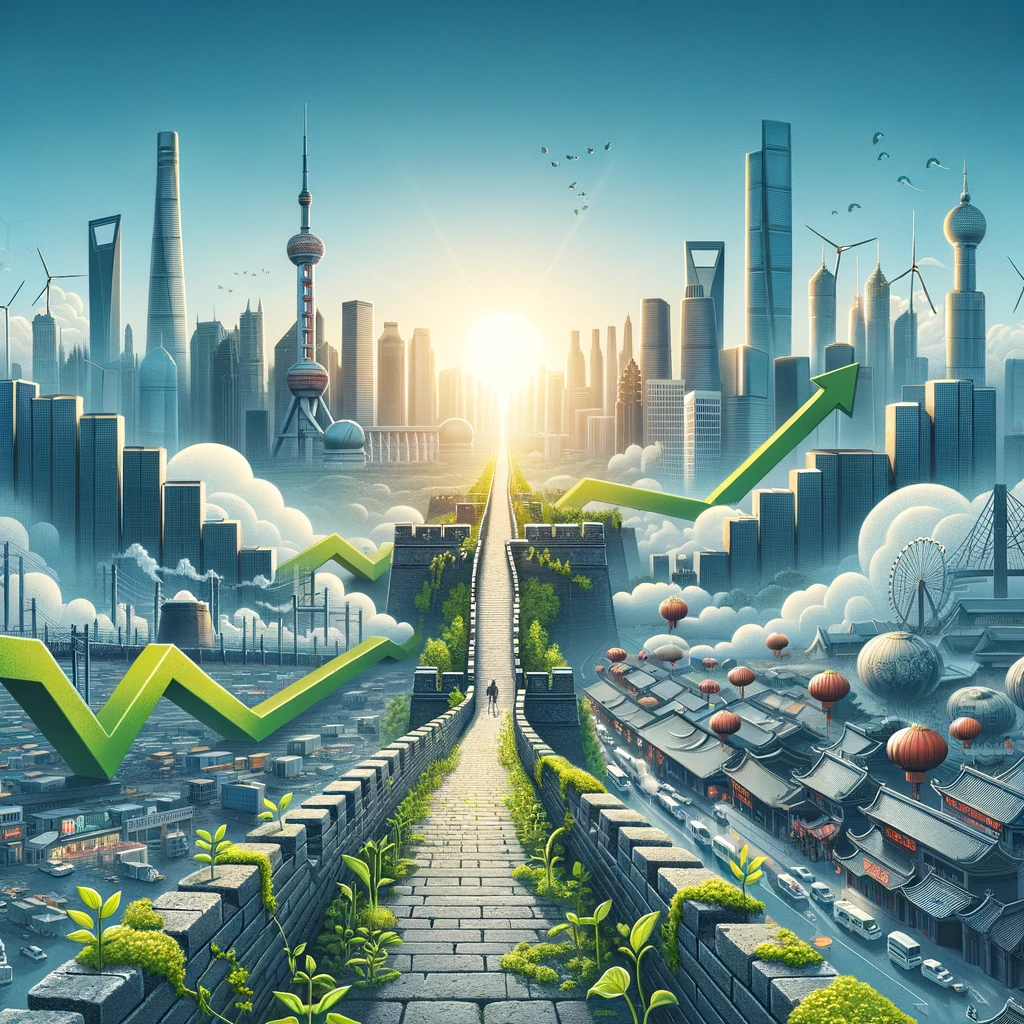China just clocked a 5.3% rise in its GDP for the first quarter of this year, outdoing the expectations of many. This gain puts the spotlight on Beijing’s push to energize its manufacturing sector, an important task for the world’s number two economy. According to an analysis prior to this, experts were betting on a more modest 4.6% increase.
The National Bureau of Statistics chimed in, noting this solid beginning paves a way for potential steady growth throughout the year. However, they also mentioned the complex global scene that might shake the fragile economic stability.
Sector Performance and Immediate Economic Outlook
The manufacturing engine drove forward with a 6.1% boost in industrial production from last year, despite facing headwinds from falling industrial producer prices, which dipped by 2.7%. This indicates that while production is up, the sector isn’t out of the deflation woods just yet.
Investments in fixed assets also saw growth, rising by 4.5%. This was primarily fueled by a 9.9% surge in manufacturing investments, although this was somewhat dampened by a 9.5% decline in property investments. Retail wasn’t all bleak either, with sales up by 4.7% over the quarter, albeit a slowdown from the 5.5% in the earlier months of January and February.
Economists believe the main economic drivers were exports and capital expenditures in new energy sectors. They also speculate that Beijing might pause any major stimulus measures unless exports tumble or the property sector dips further.
The stock markets, however, weren’t too jazzed by these numbers, with the CSI 300 index taking a 1% hit. This reaction was in tandem with other Asian markets, nudged by unexpectedly strong retail sales figures from the U.S., which tempered hopes of an immediate rate cut by the Fed.
Beijing has kept its GDP growth target steady at 5% for the year, mirroring last year’s goal, which is the lowest in decades.
Meanwhile, inflation in March stayed below projections, hinting that deflationary pressures are still in play despite efforts to boost domestic demand and stabilize the property market.
Real Estate and Economic Strategies Moving Forward
The property market, an important economic segment since 2021, showed no strong signs of recovery in the first quarter. Investments in residential real estate plunged by 10.5% year-on-year. The sector also saw a drastic reduction in new housing starts and completions, which fell by 27.8% and 20.7%, respectively.
Exports, while weaker in dollar terms, saw a volume increase as Chinese producers captured more global market share. According to Goldman Sachs, the manufacturing industry remains strong, suggesting that despite a drop in industrial production growth due to fewer working days in March, the overall manufacturing output remains strong.
Amid these economic conditions, the People’s Bank of China held its key medium-term lending rate at 2.5% just last Monday. Fitch Ratings, however, shifted its outlook on China from “neutral” to “negative,” pointing to a growth model overly reliant on property which could brew uncertainty.
China’s finance ministry hit back, criticizing Fitch for underestimating the positive impacts of its fiscal policies on economic growth. With the first-quarter GDP data revealing strong industrial production and manufacturing investment, there’s cautious optimism.
Yet, with falling property sales and concerns over the sustainability of relying heavily on manufacturing to fuel growth, it’s clear that challenges remain.
Experts at Goldman Sachs see the clear path. Increased production and exports coupled with hefty manufacturing investments are currently keeping the economic wheels turning.
But with the property market’s struggles and local governments straining under debt, there’s a general consensus that more than just factory output will be needed to stabilize and grow domestic demand.
Beijing is placing bets on high-tech and environmentally friendly industries, rolling out subsidies and programs to boost the production of electric vehicles, solar panels, and batteries. Still. As these industries gain traction, partners abroad worry about potential market disruptions similar to past events.
China maintains that these moves are driven by market forces, aiming to align with global economic shifts towards sustainability.





